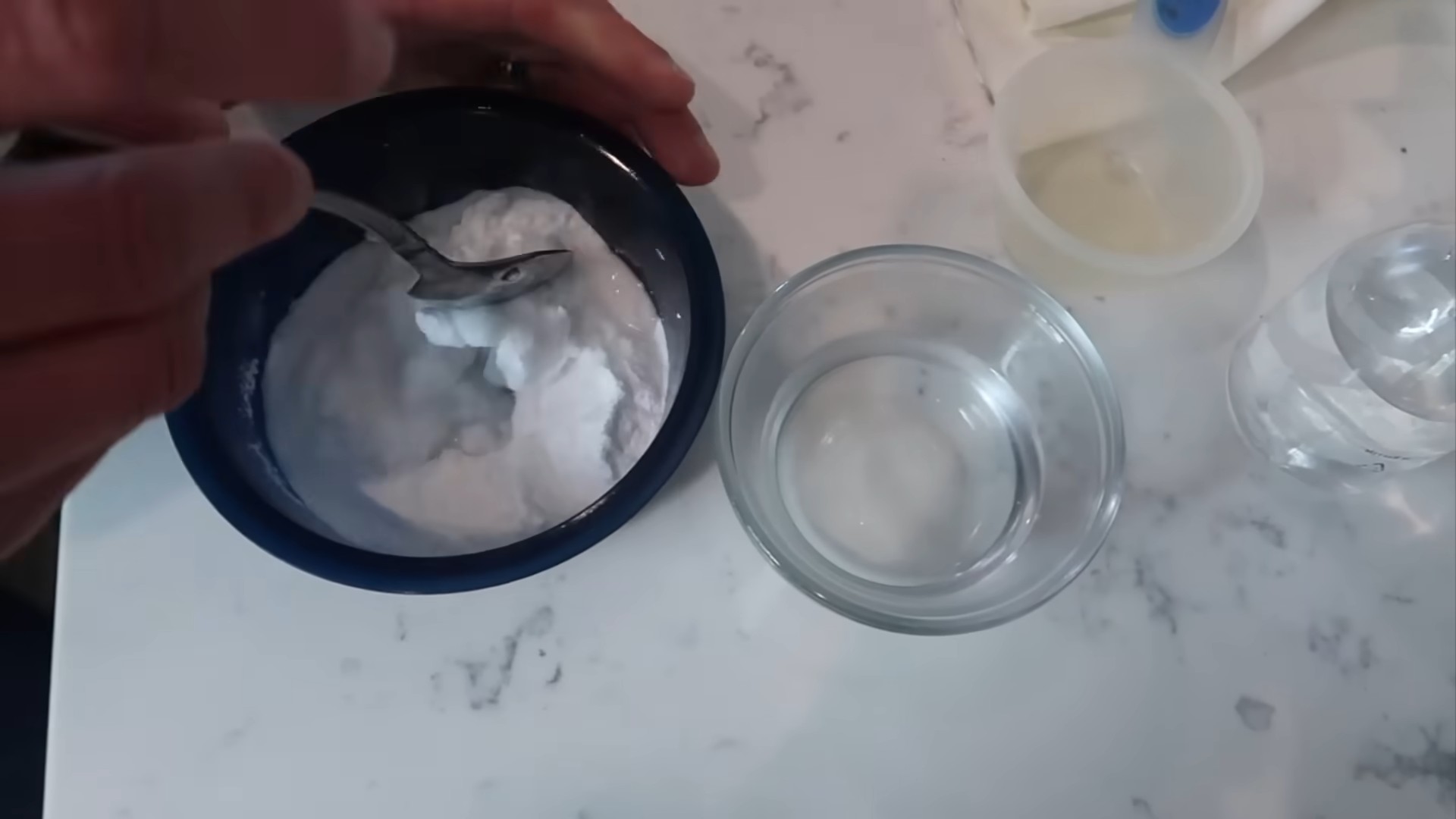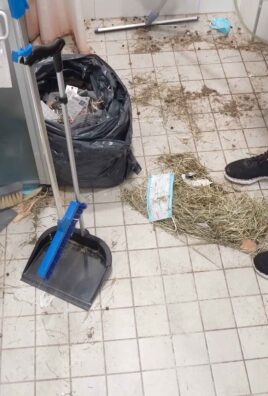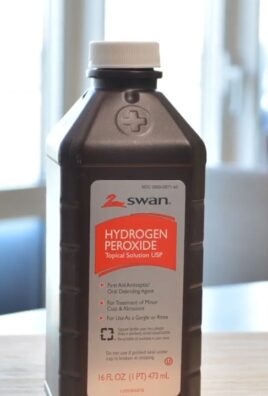Natural Oven Cleaning: Is your oven looking less like a culinary haven and more like a burnt offering site? Don’t despair! I know the dread of facing a grimy oven, but before you reach for those harsh chemicals, let me share a secret. For generations, resourceful cooks have relied on simple, natural ingredients to tackle even the toughest oven messes. Think of your grandmother’s kitchen, filled with the aroma of baking and the wisdom of using what nature provides.
This DIY guide isn’t just about cleaning; it’s about reclaiming your kitchen space and your peace of mind. We’ll ditch the fumes and embrace the power of readily available, eco-friendly solutions. Why spend a fortune on expensive cleaners when you can achieve sparkling results with ingredients you probably already have in your pantry?
I’m going to show you some amazing natural oven cleaning tricks that are not only effective but also safe for your family and the environment. Imagine opening your oven door to a gleaming interior, free from baked-on grease and lingering chemical smells. Ready to transform your oven from a source of frustration to a point of pride? Let’s get started!

DIY Natural Oven Cleaning: Say Goodbye to Harsh Chemicals!
Okay, let’s be honest, cleaning the oven is probably on everyone’s “least favorite chores” list. The baked-on grease, the lingering smells, and the thought of using harsh chemicals鈥?ugh! But fear not, my friends! I’m going to show you a super effective, totally natural way to get your oven sparkling clean without any of those nasty chemicals. This method uses ingredients you probably already have in your pantry, and it’s surprisingly easy. Trust me, you’ll be amazed at the results!
What You’ll Need
Before we dive in, let’s gather our supplies. This is a pretty simple list, which is part of what makes this method so great!
* Baking Soda
* White Vinegar
* Water
* Spray Bottle
* Spatula or Scraper (plastic or silicone is best to avoid scratching)
* Sponge or Scrub Brush
* Rubber Gloves (optional, but recommended)
* Old Towels or Rags
Step-by-Step Instructions: The Baking Soda Paste
This first part is all about creating our natural cleaning powerhouse: the baking soda paste. This stuff is amazing at loosening up all that baked-on gunk.
1. Empty the Oven: First things first, remove everything from your oven. That includes racks, baking stones, thermometers, and anything else you might have stored in there. We want a completely empty canvas to work with.
2. Mix the Paste: In a bowl, mix together 陆 cup of baking soda with a few tablespoons of water. Add the water gradually until you form a thick, spreadable paste. You want it to be similar in consistency to frosting. If you add too much water, just add a little more baking soda to thicken it up.
3. Coat the Oven: Now, put on your gloves (if you’re using them) and start applying the baking soda paste to the inside of your oven. I like to use my hands for this part, but you can use a spatula or spoon if you prefer. Make sure to coat all the surfaces, including the walls, floor, door, and even the glass window. Avoid the heating elements! Focus on areas with heavy grease and baked-on food. Don’t be shy 鈥?really slather it on!
4. Let it Sit: This is the most important part: patience! We need to let the baking soda paste work its magic. Leave it on for at least 12 hours, or even better, overnight. The longer it sits, the easier it will be to scrub off the grime. I usually do this before I go to bed so it has all night to work.
Step-by-Step Instructions: The Vinegar Power Wash
After the baking soda has had its time to work, it’s time for the vinegar to step in and finish the job. The vinegar reacts with the baking soda to create a fizzing action that helps lift away the remaining residue.
1. Prepare the Vinegar Spray: Fill your spray bottle with white vinegar. You can use it straight, no need to dilute it.
2. Spray the Vinegar: Generously spray the baking soda paste with vinegar. You’ll notice it will start to fizz and bubble. This is exactly what we want! The fizzing action helps to loosen any remaining grime.
3. Wipe Away the Grime: Using your sponge or scrub brush, start wiping away the baking soda and vinegar mixture. You might need to use a little elbow grease in some areas, especially if there’s a lot of baked-on food. The spatula or scraper can be helpful for scraping away stubborn spots. Rinse your sponge or brush frequently with warm water to keep it clean.
4. Rinse and Repeat (If Necessary): Once you’ve wiped away all the baking soda and vinegar mixture, rinse the inside of your oven thoroughly with a clean, damp sponge or rag. You might need to rinse it several times to remove all the residue. If you still see some stubborn spots, repeat the vinegar spray and scrubbing process.
5. Clean the Oven Door: Don’t forget the oven door! Use the same baking soda paste and vinegar method to clean the inside and outside of the door. Pay special attention to the glass window, as it tends to accumulate a lot of grease and grime.
6. Clean the Oven Racks: While the baking soda paste is working its magic inside the oven, you can clean the oven racks. There are a couple of ways to do this:
* In the Sink: Fill your sink with hot, soapy water and let the racks soak for a few hours. Then, scrub them with a scrub brush or steel wool to remove any baked-on food.
* In the Bathtub: If your sink isn’t big enough, you can use your bathtub. Line the bottom of the tub with old towels to protect the surface. Fill the tub with hot, soapy water and let the racks soak. Then, scrub them clean.
* Baking Soda Paste Method: You can also use the baking soda paste on the racks. Apply the paste to the racks, let it sit for a few hours, and then scrub them clean.
7. Dry Everything: Once you’ve cleaned everything, dry the inside of the oven, the door, and the racks with clean towels or rags. Make sure everything is completely dry before you put the racks back in the oven.
Extra Tips and Tricks for a Sparkling Clean Oven
Okay, so we’ve covered the basics, but here are a few extra tips and tricks to help you get your oven even cleaner and keep it that way!
* For Extra Stubborn Stains: If you have some really stubborn stains that just won’t budge, try making a paste of baking soda and hydrogen peroxide. Apply the paste to the stains, let it sit for a few minutes, and then scrub them away.
* Preventative Measures: To prevent your oven from getting too dirty in the first place, try placing a baking sheet on the bottom rack to catch any drips or spills. You can also clean up spills as soon as they happen to prevent them from baking onto the oven floor.
* Self-Cleaning Ovens: If you have a self-cleaning oven, you can still use this natural cleaning method. However, you might want to run the self-cleaning cycle first to loosen up some of the grime. Just be sure to let the oven cool completely before you start cleaning it with baking soda and vinegar.
* Lemon Power: For a fresh, citrusy scent and extra cleaning power, try adding a few drops of lemon essential oil to your vinegar spray. You can also place a bowl of water with lemon slices in the oven and bake it at 350 degrees for 30 minutes to help loosen up grime and deodorize the oven.
* Regular Cleaning: The key to keeping your oven clean is to clean it regularly. Try to wipe it down after each use to prevent spills from baking onto the oven floor. A quick wipe-down with a damp cloth can make a big difference.
* Don’t Forget the Broiler Pan: The broiler pan is another part of the oven that can get really dirty. To clean it, soak it in hot, soapy water for a few hours, then scrub it with a scrub brush or steel wool. You can also use the baking soda paste method to clean the broiler pan.
* Clean the Exterior: While you’re cleaning the inside of the oven, don’t forget to clean the exterior! Wipe down the outside of the oven with a damp cloth and a mild cleaner. You can also use a stainless steel cleaner to polish the stainless steel surfaces.
* Ventilation is Key: When cleaning your oven, make sure to open a window or turn on the exhaust fan to ventilate the area. This will help to remove any odors and prevent you from inhaling any fumes.
* Test in an Inconspicuous Area: Before applying the baking soda paste to the entire oven, test it in an inconspicuous area to make sure it doesn’t damage the surface. This is especially important if you have a delicate or unusual oven finish.
* Be Patient: Cleaning the oven can be a time-consuming process, so be patient and don’t get discouraged. With a little elbow grease and these natural cleaning methods, you can get your oven sparkling clean without using any harsh chemicals.
Why This Method Works
So, why does this baking soda and vinegar method work so well? It’s all about the chemistry! Baking soda is a mild alkali, which means it can help to dissolve grease and grime. Vinegar is a mild acid, which means it can help to break down mineral deposits and hard water stains. When you combine baking soda and vinegar, they react to create carbon dioxide gas, which helps to lift away dirt and debris. Plus, both baking soda and vinegar are natural deodorizers, so they’ll help to get rid of any lingering odors in your oven.
A Final Word
I hope this guide has helped you feel confident about tackling that oven cleaning task! Remember, it’s all about patience and persistence. With a little

Conclusion
So, there you have it! Ditching harsh chemicals and embracing this natural oven cleaning method is not just a trend; it’s a game-changer for your kitchen, your health, and the environment. We’ve walked you through a simple, effective process that utilizes ingredients you likely already have in your pantry: baking soda, vinegar, and a little bit of elbow grease.
But why is this DIY approach a must-try? Beyond the obvious benefits of avoiding toxic fumes and expensive cleaning products, this method offers a gentler, yet surprisingly powerful, clean. It’s particularly effective at loosening baked-on grease and grime, making it easier to wipe away stubborn messes. Think of it as a spa day for your oven, leaving it sparkling and ready for your next culinary adventure.
And the best part? It’s incredibly versatile. While the baking soda paste and vinegar spray are the foundation of this cleaning method, feel free to experiment with variations to suit your specific needs and preferences. For instance, if you’re dealing with particularly tough stains, you can add a few drops of lemon essential oil to the baking soda paste for an extra boost of cleaning power and a refreshing scent. Alternatively, you could try using a paste made with cream of tartar instead of baking soda for a slightly different abrasive action.
Another variation involves pre-heating your oven to a low temperature (around 200掳F or 93掳C) for about 15-20 minutes after applying the baking soda paste. This gentle heat can help to further loosen the grime, making it even easier to wipe away. Just be sure to turn off the oven and let it cool slightly before proceeding with the vinegar spray and wiping down.
For those with self-cleaning ovens, remember that this natural method can be used as a supplementary cleaning solution to maintain a spotless oven between self-cleaning cycles. It’s a great way to prevent the buildup of heavy grime and reduce the frequency of using the high-heat self-cleaning function, which can sometimes produce unpleasant odors and consume a significant amount of energy.
We understand that switching to a natural cleaning method might seem daunting at first, especially if you’re used to the convenience of commercial oven cleaners. However, we encourage you to give this DIY trick a try. You might be surprised at how effective and satisfying it is to clean your oven with simple, natural ingredients.
More than just a clean oven, you’re contributing to a healthier home and a more sustainable lifestyle. You’re reducing your exposure to harmful chemicals, minimizing your environmental impact, and saving money in the process. It’s a win-win-win situation!
So, roll up your sleeves, gather your supplies, and get ready to transform your oven. We’re confident that you’ll be amazed by the results. And most importantly, we want to hear about your experience! Share your before-and-after photos, your tips and tricks, and any variations you’ve tried in the comments below. Let’s build a community of natural cleaning enthusiasts and inspire others to embrace a healthier, more sustainable way of life. Your feedback is invaluable, and we can’t wait to see your sparkling ovens! Let us know how this natural oven cleaning method worked for you.
Frequently Asked Questions (FAQ)
1. Is this natural oven cleaning method safe for all types of ovens?
Yes, this method is generally safe for most types of ovens, including gas, electric, and convection ovens. However, it’s always a good idea to consult your oven’s manual for any specific cleaning recommendations or warnings. Pay particular attention to any special coatings or finishes inside your oven, and test the baking soda paste on a small, inconspicuous area first to ensure it doesn’t cause any damage or discoloration. For self-cleaning ovens, this method is safe to use in between self-cleaning cycles to maintain cleanliness.
2. How often should I clean my oven using this natural method?
The frequency of cleaning depends on how often you use your oven and how much food splatters and spills inside. As a general guideline, cleaning your oven every 1-3 months is a good practice to prevent the buildup of heavy grime. If you notice significant food residue or grease buildup, you may need to clean it more frequently. Regular spot cleaning of spills as they occur can also help to minimize the need for deep cleaning.
3. What if the baking soda paste dries out and becomes difficult to remove?
If the baking soda paste dries out and becomes hard to remove, don’t panic! Simply dampen a sponge or cloth with warm water and gently scrub the paste to rehydrate it. You can also try spraying the dried paste with a mixture of water and vinegar to help loosen it. Let it sit for a few minutes before wiping it away. Avoid using excessive force or abrasive scrubbers, as this could damage the oven’s surface.
4. Can I use this method to clean the oven door glass?
Yes, this method is effective for cleaning the oven door glass. Apply the baking soda paste to the glass, let it sit for the recommended time, and then spray it with vinegar. Wipe away the paste and vinegar with a clean cloth or sponge. For stubborn stains, you can use a razor blade scraper (carefully!) to remove the residue. Be sure to avoid scratching the glass.
5. What if I don’t have vinegar? Can I use something else?
While vinegar is the preferred ingredient for reacting with the baking soda and loosening grime, you can try using lemon juice as a substitute. Lemon juice has natural cleaning properties and a pleasant scent. Simply mix equal parts lemon juice and water in a spray bottle and use it in place of the vinegar. However, vinegar is generally more effective at cutting through grease and grime.
6. Is it necessary to wear gloves when cleaning the oven with this method?
While the ingredients used in this natural cleaning method are generally safe, it’s always a good idea to wear gloves to protect your hands from prolonged exposure to baking soda and vinegar. This is especially important if you have sensitive skin or any cuts or abrasions on your hands.
7. How do I clean the oven racks using this natural method?
Cleaning oven racks can be a bit more challenging, but this method can still be effective. One option is to soak the racks in a bathtub filled with hot water and a cup of baking soda. Let them soak for several hours or overnight, then scrub them with a brush or sponge. Alternatively, you can apply the baking soda paste directly to the racks, let it sit for the recommended time, and then scrub them clean. Rinse thoroughly with water and dry before placing them back in the oven.
8. Can I use essential oils other than lemon in the baking soda paste?
Yes, you can experiment with other essential oils in the baking soda paste. Tea tree oil has antibacterial properties and can help to disinfect the oven. Orange essential oil has a degreasing effect and a pleasant citrus scent. Lavender essential oil can add a calming aroma to your cleaning process. Just be sure to use pure, high-quality essential oils and add only a few drops to the paste.
9. What if my oven has a particularly strong odor?
If your oven has a lingering odor after cleaning, you can try placing a bowl of baking soda inside the oven overnight to absorb the odor. You can also simmer a pot of water with lemon slices or orange peels on the stovetop to freshen the air in your kitchen. Ensure the oven is completely dry before using it again to prevent any further odor development.
10. How can I prevent food from splattering and making my oven dirty in the first place?
Prevention is key to keeping your oven clean! Use oven-safe covers or lids when cooking dishes that are prone to splattering. Place a baking sheet on the rack below to catch any drips. Clean up spills immediately as they occur. Consider using parchment paper or silicone baking mats to line your baking sheets and prevent food from sticking. Regular maintenance and preventative measures will significantly reduce the need for deep cleaning.





Leave a Comment